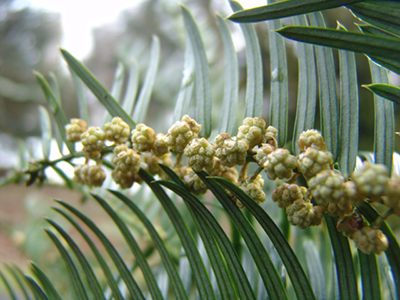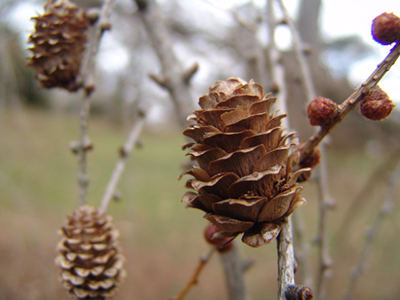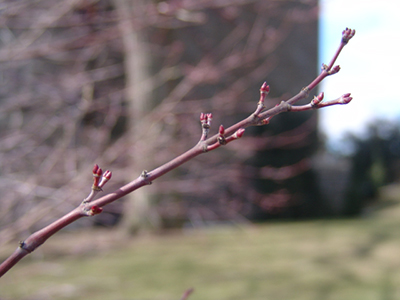
Plants of the Week: March 26

Cephalotaxus harringtonia var. drupacea
Commonly called the Japanese Plum Yew, Cephalotaxus harringtonia is a large, bushy evergreen shrub with dark branches and deep green needles. A member of the family Taxodiaceae, it is similar in form and habit to the genus Taxus and can be used as an accent planting, a sheared hedge, or for privacy.
The variety drupacea is reportedly the most winter hardy of the species. A dioecious species, the female plants, when pollinated produce walnut-sized, fleshy fruits that are allegedly edible.
The genus name comes from the Greek-root prefix meaning “head” and its resemblance to the genus Taxus. Sources indicate that the species name likely refers to Charles Stanhope, the 4th Earl of Harrington of 18th century Great Britain for his penchant for the plant. This specimen can be found near the tennis courts outside of Wharton Hall. Photo credit: J. Bickel

Larix kaempferi
The Japanese larch Larix kaempferi is one of about two dozen deciduous conifer species in the world. Every spring, it produces a canopy of bright green needles that persist through the growing season before turning a spectacular shade of yellow and eventually falling in winter.
The finely detailed, upright, mature cones persist this time of year alongside the beginnings of the otherworldly-red nascent cones.
According to A.W. Smith’s Gardener’s Dictionary of Plant Names, the species name honors the the 17th century German botanist Engelbert Kaempfer who is well known for his botanical explorations of the far east, namely Japan. This specimen can be found near the tennis courts outside of Wharton Hall. Photo credit: J. Bickel

Acer palmatum ‘Ueno-yama’
This week, I chose to highlight Acer palmatum ‘Ueno-yama’ for the subtle, yet attractive red color of the previous year’s growth and this year’s buds. It is a well known and frequently sold cultivar, generally popularized for its leaves that emerge bright orange-yellow in the spring before maturing to green in the summer.
The bright red color of the winter stems stands out from a distance and will no doubt be a fantastic contrast to the yellow-orange new growth in the early spring. I look forward to catching the two colors together in the coming month. This particular specimen can be found on the east side of McCabe Library. Photo credit: J. Bickel





No Comments